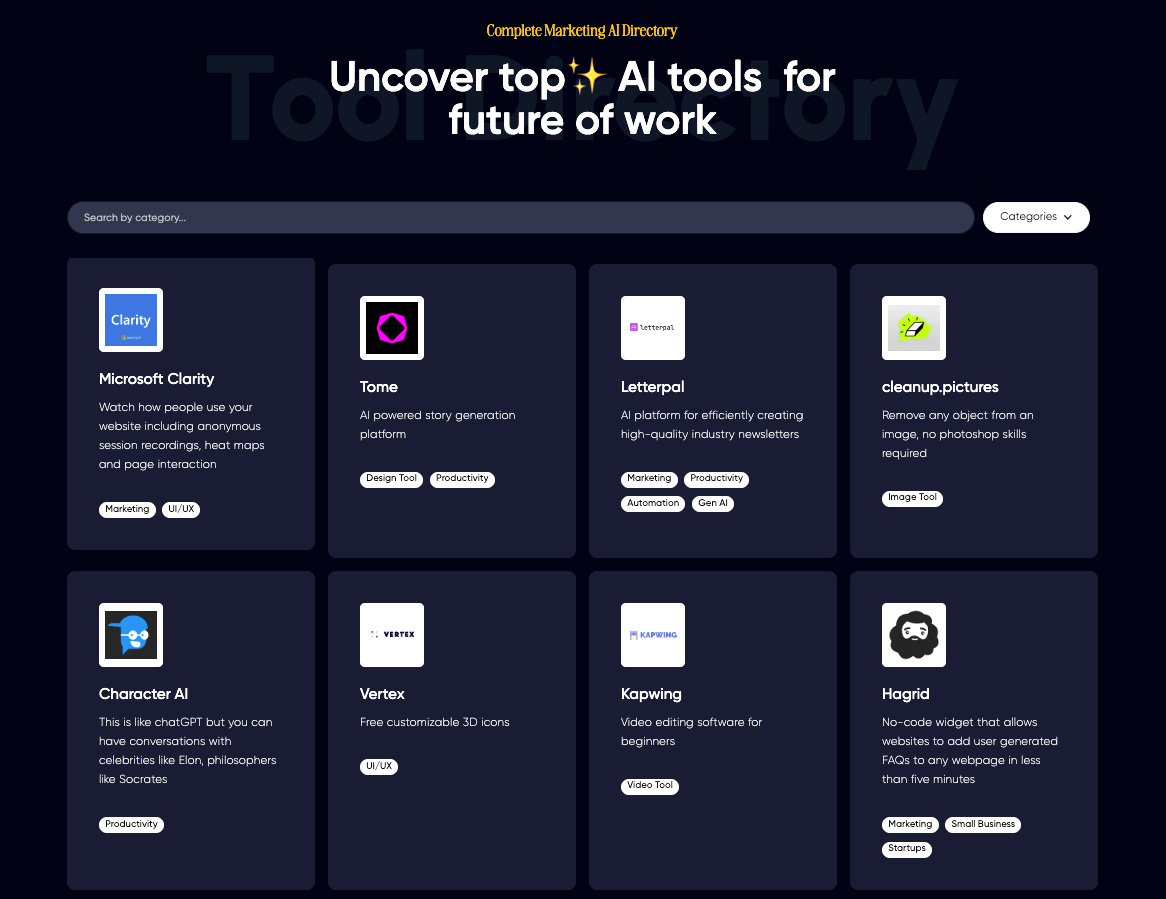Hitting $35,000 Monthly + 1M+ Followers By Focusing On Content First
How this 30 years old amassed 1M+ followers & build a SaaS business around his content.
Hello! Can you introduce yourself and tell us about your business?
I'm Kushank Aggarwal, a 30-year-old entrepreneur based in Vancouver, BC.
My journey began with a computer systems engineering degree, where I developed a passion for building products. Initially, I was obsessed with creating electronic gadgets using Arduino, but I realized that wasn't sustainable as a long-term business.
After graduating, I worked in healthcare consulting, which I found rather boring, then switched to product management. While I enjoyed building things in that role, the desire to create something of my own kept growing until I finally left my job to pursue entrepreneurship full-time.
In late 2020, I started creating content to push myself out of my comfort zone. Fast forward to today, I've built a following of over 1 million across various social platforms as "DigitalSamaritan," sharing insights about AI tools and workflows.
Currently, I run several AI-focused SaaS products with my small team of four. My brother Natik Aggarwal is the tech lead and my CoFounder:
Prompt-Genie - A tool that helps generate high-quality AI prompts.
Map-This- An AI mind mapping tool that transforms any content into organized visual maps.
Looplytic - Our newest product; an AI-driven user interview tool that streamlines the customer feedback process.
Together, these products and my content business generate around $30-35K in monthly recurring revenue. I'm passionate about experimenting with AI technology and sharing those insights with my audience, helping them navigate the rapidly evolving AI landscape without having to spend countless hours in the trenches themselves.
How did you start this business? Take us through the process.
When I decided to go all-in on entrepreneurship in late 2022, I had some savings from my day job and content creation to sustain me.
Growing up with small business owner parents, I was always surrounded by that entrepreneurial mindset, which ultimately motivated me to seek the freedom to build on my own terms.
The journey wasn't immediate. I had been trying my hand at various startup ideas since 2019, with plenty of failed projects sitting in the closet.
Between 2020 and 2022, I was creating content while holding down my day job, gradually building an audience passionate about AI and productivity.
The idea for Prompt-Genie came from a clear gap I spotted in the market. While scrolling through Twitter, I noticed many viral AI prompts were poorly designed, yet people were desperate for quality prompts to get better results from tools like ChatGPT.
What's fascinating is how quickly we built and launched that first product. We created the initial version of Prompt-Genie in just four days using no-code tools!
There was no massive upfront investment—just our time and the cost of the no-code platforms. We took an extremely scrappy approach, focusing on validating the core idea rather than building something perfect.
The for map-this.com came from my viral video on Instagram. the workflow was using GPTs and the video got 20M views.
My brother realized that people need a better UX for this workflow so we turned that workflow into a micro SaaS. We went from idea to launch in 14 days.
How did you get your first initial customers?
This might not work for everyone but we had a massive leverage of existing audience.
The path to our first customers was actually quite straightforward, thanks to my existing content creation efforts. When we launched Prompt-Genie, I already had a following on TikTok where I regularly shared AI tips and productivity hacks.
For those crucial first 10-100 customers, my marketing approach was incredibly focused: I created a TikTok video showcasing Prompt-Genie and the problem it solved.
The video was authentic - I simply demonstrated how frustrating it was to write effective AI prompts from scratch and how our tool eliminated that pain point.
This single video drove our initial wave of signups within the first 24-48 hours after launch.
Since launch, what are your marketing strategies or channels to get new customers?
Since our initial launch, we've evolved our marketing approach while staying true to what works best for us.
Content marketing remains our core strategy, but we've expanded and refined how we approach it. Social Media, my personal TikTok and Instagram accounts continue to be our primary marketing engines.
However, we've become more strategic about the content we create. Rather than just general AI tips, we now produce highly specific, problem-focused videos that naturally lead viewers to one of our products.
For example, I'll create content about common challenges in using AI for specific use cases, then show how our tools provide the solution.
AI-Generated Content Experiment One of our most successful recent experiments was with AI UGC (User Generated Content) for Prompt-Genie. We used AI to create engaging content for the product's own social media accounts rather than just relying on my personal channels.
The results were remarkable: Prompt-Genie's Instagram following grew from 300 to 10,000, and we now see over 100 clicks per day from Instagram bio links alone.
Localized SEO For Map-This: we implemented a targeted SEO strategy focusing on "mind maps" keywords in different languages.
While this hasn't generated massive traffic, it's been a valuable experiment in reaching international users who might not find us through English-language content.
We also highlight our products in our AI tools directory and newsletter as well.
How does your business make money?
Our business model has evolved through experimentation, with our current approach primarily centered on freemium subscriptions across our product suite.
For Prompt-Genie, we initially launched with a 3-day free trial followed by a $3.99 monthly subscription. After five months, we increased the price to $5.99 with no change in conversion rate, though churn remained high.
In 2024, we made a critical change by removing the credit card requirement for the trial, which significantly reduced churn. Our current pricing is $9 monthly with a freemium tier that gives users a taste of the value before upgrading.
With Map-This, our pricing journey has been more volatile. We started at $5.99 monthly, but discovered users were uploading PDFs without converting to paid plans, causing us to lose money. We quickly pivoted by placing this popular feature behind the paywall, which boosted our conversion rate and helped the product reach $8K MRR by September 2024.
In November, we attempted to increase the price to $9.99, but our price-sensitive user base responded negatively, causing conversions to plummet. We've since returned to the $5.99 price point that works for this audience.
For Looplytic, our newest product for AI-driven user interviews, we're still in the process of optimizing the pricing model as we gather feedback from early adopters.
Beyond our SaaS products, my content creation business generates revenue through brand partnerships with major AI and tech companies.
Looking toward the future, we plan to expand our monetization in several ways: Enterprise tiers for our existing products, especially Looplytic, which has natural applications for larger companies doing customer research, exploring bundled offerings for users who might benefit from multiple products.
Developing our upcoming email marketing tool with a more refined pricing strategy based on the lessons from our existing products The key insight we've gained is that pricing isn't just about maximizing revenue—it's about finding the sweet spot where perceived value exceeds cost for our specific audience segments. We've learned that our audience is relatively price-sensitive, so delivering exceptional value at accessible price points works better than premium pricing with incremental features.
Our goal is to hit a 7-figure annual revenue target while maintaining the freedom to build and experiment with new products.
To do this, we'll continue refining our business model, doubling down on products with the best unit economics, and potentially phasing out underperforming offerings.
How much time do you spend on the business each week?
In some ways it is 24/7, since I think about it all the time, but in some ways it is now down to 30/35 hours a week.
It used to be 60-70 hours when I was creating content and had a full-time or early days when I went full in. But lately I realized I don't want to optimize my life for money but for freedom.
Why wait for money to unlock freedom so I am trying to balance it out now vs putting it for later?
Where can we go to lean more about you and your business?
You can find me on:
Instagram: @digitalsamaritan
TikTok:
YouTube:
https://www.digitalsamaritan.co/








